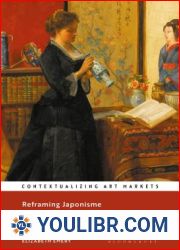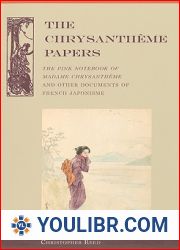
BOOKS - Reframing Japonisme: Women and the Asian Art Market in Nineteenth-Century Fra...


US $9.66

44043

44043
Reframing Japonisme: Women and the Asian Art Market in Nineteenth-Century France, 1853-1914 (Contextualizing Art Markets)
Author: Elizabeth Emery
Year: November 12, 2020
Format: PDF
File size: PDF 18 MB
Language: English
Year: November 12, 2020
Format: PDF
File size: PDF 18 MB
Language: English
Japonisme, the nineteenth-century fascination for Japanese art, has generated an enormous body of scholarship since the beginning of the twenty-first century, but most of it neglects the women who acquired objects from the Far East and sold them to clients or displayed them in their homes before bequeathing them to museums. The stories of women shopkeepers, collectors, and artists rarely appear in memoirs left by those associated with the japoniste movement.This volume brings to light the culturally important, yet largely forgotten activities of women such as Clemence d'Ennery (1823-1898), who began collecting Japanese and Chinese chimeras in the 1840s, built and decorated a house for them in the 1870s, and bequeathed the "Musee d'Ennery" to the state as a free public museum in 1893. A friend of the Goncourt brothers and a fifty-year patron of Parisian dealers of Asian art, d'Ennery's struggles to gain recognition as a collector and curator serve as a lens through which to examine the collecting and display practices of other women of her day.Travelers to Japan such as the Duchesse de Persigny, Isabella Stewart Gardner, and Laure Durand- Fardel returned with souvenirs that they shared with friends and family. Salon hostesses including Juliette Adam, Louise Cahen d'Anvers, Princesse Mathilde, and Marguerite Charpentier provided venues for the discussion and examination of Japanese art objects, as did well-known art dealers Madame Desoye, Madame Malinet, Madame Hatty, and Madame Langweil. Writers, actresses, and artists-Judith Gautier, Therese Bentzon, Sarah Bernhardt, and Mary Cassatt, to name just a few- took inspiration from the Japanese material in circulation to create their own unique works of art.Largely absent from the history of Japonisme, these women-and many others-actively collected Japanese art, interacted with auction houses and art dealers, and formed collections now at the heart of museums such as the Louvre, the Musee Guimet, the Musee Cernuschi, the Musee Unterlinden, and the Metropolitan Museum of Art.














































